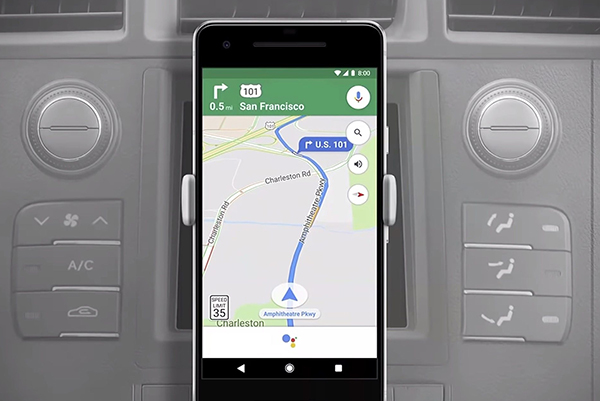Navigation-Optimized Google Assistant for Google Maps Rolling Out to Android
Initially announced in May at the Google I/O 2018 event, Google Assistant for Navigation has been rolling out to Android devices. No official launch date was determined; at I/O Google said it would be rolling out in the summer. Over the past couple of days, it has been rolling out to the stable version (10.4.1) of Google Maps for Android and the Google app. The new version is smaller, less distracting, and executes more commands in the background.

Photo Credit: 9to5Google
Navigation-Optimized Google Assistant
While using Google Maps, users can either say “Ok Google,” or tap the microphone button to activate Google Assistant. Users can issue commands like texting, calling, playing music, and more from Assistant without having to leave navigation mode. Commands will run in the background, and keep users in Google Maps.
Previously, invoking Google Assistant in Maps during navigation would take up over half the screen. Now, the Assistant pop-up is confined to a small bar that overlays the bottom ETA section, and some users are reporting that Google Assistant has been activating within the microphone button.
Last week Google Assistant launched Pretty Please, Broadcast Replies, and notes/list app integration. Google Maps was updated in October to add a ‘Commute’ tab with live traffic information, business messaging, the ability to follow stores for updates, Spotify, and Apple Music integration. The updated version of Google Assistant for Maps works with these recent updates.
Bringing an Infotainment System to Your Car, Rather Than the Car Bringing a System to You
The integration of Google Assistant and Google Maps is a significant move that allows any user of an updated app to experience an in-car infotainment system through their phone. Traffic information, communication, and music playing are all integrated into Google Maps, and the inclusion of a well run Google Assistant creates a full package infotainment system that appeals to the everyday user. It is also much cheaper to make use of your phone as an infotainment system than it is to buy a newer car model that uses Android Auto. Maps users will not only be able to mount their phones to their dashboard in their car but will also be able to take their navigation with them out of the car. If you need to finish up your navigation with some walking after you park, you don’t have to stop that podcast you were listening to while driving. The infotainment sticks with the consumer.
This update also increases the competition for those developing infotainment systems. If users know they can access a more sophisticated system on their phone, they will most likely expect the same quality system in their car. It will be interesting to see how the Echo Auto will compare, and whether or not consumers will even be interested in using it. The Google Assistant update allows both screen and voice interaction, whereas the Echo Auto would only allow voice interaction. Given either system, however, the trend is clear: consumers don’t just want voice commands for their car, they want the whole voice assistant package.
SoundHound Adds Honda to its Growing Automotive Partner List
Twilio Autopilot Brings Chat, SMS and Phone Call Support to Alexa and Google Assistant









